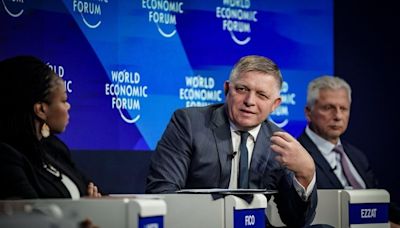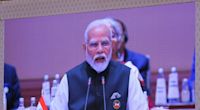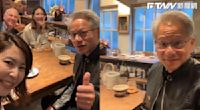搜尋結果
Slovakia ( / sloʊˈvækiə, - ˈvɑːk -/ ⓘ; [8] [9] Slovak: Slovensko [ˈslɔʋenskɔ] ⓘ ), officially the Slovak Republic (Slovak: Slovenská republika [ˈslɔʋenskaː ˈrepublika] ⓘ ), is a landlocked country in Central Europe.
Robert Fico ( Slovak: [ˈrɔbert ˈfitsɔ]; born 15 September 1964) is a Slovak politician who is currently serving as the prime minister of Slovakia since 2023. He previously served as prime minister from 2006 to 2010 and from 2012 to 2018. He founded the Direction – Social Democracy (Smer–SD) party in 1999 and has led that party since its start.
- Origins
- First Czechoslovak Republic
- Interwar Period
- Munich Agreement, and Two-Step German Occupation
- Communist Czechoslovakia
- After 1989
The area was part of the Austro-Hungarian Empire until it collapsed at the end of World War I. The new state was founded by Tomáš Garrigue Masaryk, who served as its first president from 14 November 1918 to 14 December 1935. He was succeeded by his close ally Edvard Beneš(1884–1948). The roots of Czech nationalism go back to the 19th century, when ...
Formation
The Bohemian Kingdom ceased to exist in 1918 when it was incorporated into Czechoslovakia. Czechoslovakia was founded in October 1918, as one of the successor states of the Austro-Hungarian Empire at the end of World War I and as part of the Treaty of Saint-Germain-en-Laye. It consisted of the present day territories of Bohemia, Moravia, parts of Silesia making up present day Czech Republic, Slovakia, and a region of present-day Ukraine called Carpathian Ruthenia. Its territory included some...
Ethnicity
The new country was a multi-ethnic state, with Czechs and Slovaks as constituent peoples. The population consisted of Czechs (51%), Slovaks (16%), Germans (22%), Hungarians (5%) and Rusyns (4%). Many of the Germans, Hungarians, Ruthenians and Poles and some Slovaks, felt oppressed because the political elite did not generally allow political autonomy for minority ethnic groups.[citation needed] This policy led to unrest among the non-Czech population, particularly in German-speaking Sudetenla...
During the period between the two world wars Czechoslovakia was a democratic state. The population was generally literate, and contained fewer alienated groups. The influence of these conditions was augmented by the political values of Czechoslovakia's leaders and the policies they adopted. Under Tomas Masaryk, Czech and Slovak politicians promoted...
In September 1938, Adolf Hitler demanded control of the Sudetenland. On 29 September 1938, Britain and France ceded control in the Appeasement at the Munich Conference; France ignored the military alliance it had with Czechoslovakia. During October 1938, Nazi Germanyoccupied the Sudetenland border region, effectively crippling Czechoslovak defences...
After World War II, prewar Czechoslovakia was reestablished, with the exception of Subcarpathian Ruthenia, which was annexed by the Soviet Union and incorporated into the Ukrainian Soviet Socialist Republic. The Beneš decrees were promulgated concerning ethnic Germans (see Potsdam Agreement) and ethnic Hungarians. Under the decrees, citizenship was...
In 1989, the Velvet Revolution restored democracy.This occurred around the same time as the fall of communism in Romania, Bulgaria, Hungary, East Germany and Poland. The word "socialist" was removed from the country's full name on 29 March 1990 and replaced by "federal". Pope John Paul II made a papal visitto Czechoslovakia on 21 April 1990, hailin...
The M4 Sherman, officially Medium Tank, M4, was the most widely used medium tank by the United States and Western Allies in World War II. The M4 Sherman proved to be reliable, relatively cheap to produce, and available in great numbers.
The Slovakia national football team ( Slovak: Slovenská futbalová reprezentácia) represents Slovakia in men's international football competition and it is governed by the Slovak Football Association (SFZ), the governing body for football in Slovakia. Slovakia's home stadium from 2019 is the reconstructed Tehelné pole in Bratislava.
Košice ( UK: / ˈkɒʃɪtsə / KOSH-it-sə, [3] Slovak: [ˈkɔʂitse] ⓘ) [a] is the largest city in eastern Slovakia. It is situated on the river Hornád at the eastern reaches of the Slovak Ore Mountains, near the border with Hungary. With a population of approximately 230,000, Košice is the second-largest city in Slovakia, after the ...
The Battle of Kursk was a major World War II Eastern Front battle between the forces of Germany and the Soviet Union near Kursk in southwestern Russia during the summer of 1943, resulting in a Soviet victory. The Battle of Kursk was the single largest battle in the history of warfare.








